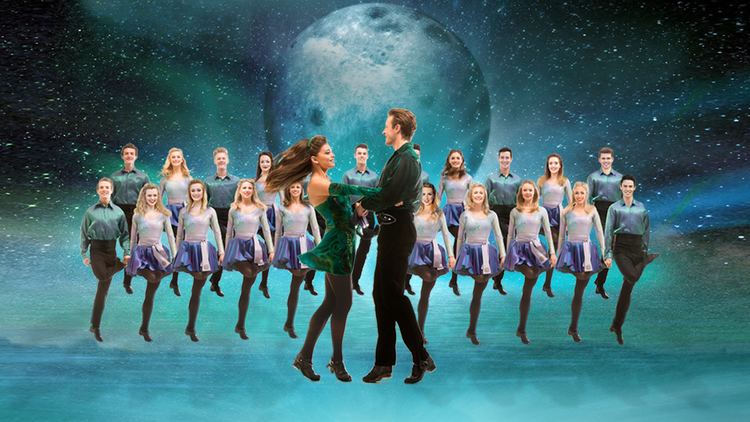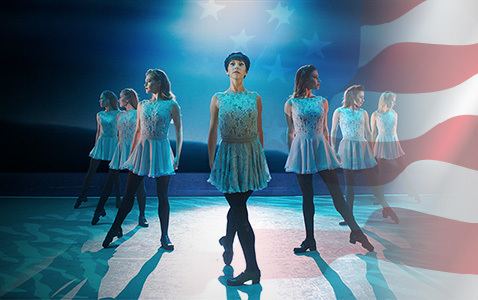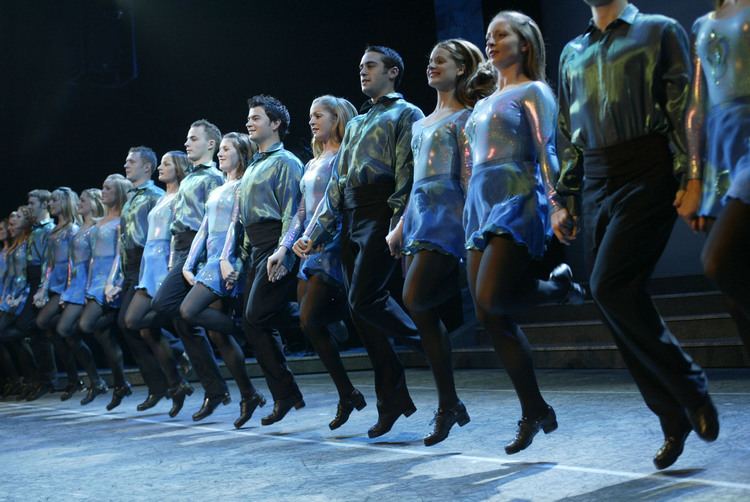 | ||
Similar Lord of the Dance, The Countess Cathleen, The Book of Mormon, Jersey Boys, The Phantom of the Opera | ||
Riverdance the final full hd
Riverdance is a theatrical show consisting mainly of traditional Irish music and dance. Featuring Irish dancing champions Jean Butler and Michael Flatley, and with a score composed by Bill Whelan, it originated as an interval performance act during the 1994 Eurovision Song Contest. Shortly afterwards, husband and wife production team John McColgan and Moya Doherty expanded it into a stage show, which opened in Dublin on 9 February 1995. Since then, the show has visited over 450 venues worldwide and been seen by over 25 million people, making it one of the most successful dance productions in the world.
Contents
- Riverdance the final full hd
- Irish dance group irish step dancing riverdance 2009
- Background
- Eurovision performance
- Dublin and London
- Michael Flatley departure
- Riverdance resurgence
- Early 2000s
- Legacy
- Other notable dancers
- CD
- VHS
- DVD
- References

Irish dance group irish step dancing riverdance 2009
Background

Riverdance is rooted in a three-part suite of baroque-influenced traditional music called Timedance composed, recorded and performed for the 1981 Eurovision Song Contest, which was hosted by Ireland. At the time, Bill Whelan and Dónal Lunny composed the music, augmenting the Irish folk band Planxty with a rock rhythm section of electric bass and drums and a four-piece horn section. The piece was performed, with accompanying ballet dancers, during the interval of the contest, and later released as a Planxty single. Whelan had also produced EastWind, a 1992 album by Planxty member Andy Irvine with Davy Spillane, which fused Irish and Balkan folk music and influenced the genesis of Riverdance. Thirteen years later, Bill Whelan was invited to do the intermission piece for another Eurovision Song Contest in Dublin, and composed Riverdance. In a book about Planxty (The Humours of Planxty, by Leagues O'Toole), Whelan says, "It was no mistake of mine to call it Riverdance because it connected absolutely to Timedance".
Eurovision performance

Riverdance was first performed during the seven-minute interval of the 1994 Eurovision Song Contest at the Point Theatre in Dublin on 30 April 1994. The performance earned a standing ovation from the packed theatre of 3,000 people. Due to the act's success, Riverdance was invited to perform at the prestigious Royal Variety Performance at Dominion Theatre, London in the presence of Prince Charles on 28 November 1994. The act was introduced on stage by Sir Terry Wogan. Both performances featured American Irish dancing champions Jean Butler and Michael Flatley, the RTÉ Concert Orchestra and the choral ensemble Anúna with a score written by Bill Whelan.

At Congratulations: 50 Years of the Eurovision Song Contest and Eurovision Song Contest's Greatest Hits events, the seven-minute performance was named as one of the most popular interval acts in the history of the contest.
An audio recording of "Riverdance" entered the Irish Singles Chart at number one on 5 May 1994, and remained there throughout the summer (keeping Wet Wet Wet's "Love Is All Around" off the top), eventually totalling a record 18 weeks at #1. In response to the Rwandan Genocide of May/June 1994, a video of the Eurovision interval performance was released by the Irish broadcaster Raidió Teilifís Éireann under the title "Riverdance for Rwanda" with all proceeds going to the Rwanda Appeal Disasters Joint Appeal Committee.
Dublin and London
The success of the Eurovision performance led husband and wife production team John McColgan and Moya Doherty to consider how to develop the piece. They decided to produce and direct a stage show, expanding the Eurovision piece and asking Bill Whelan to compose a full score to the piece. In November 1994, tickets were sold in Dublin for the first full-length performance of Riverdance, which opened at the Point Theatre on 9 February 1995. The show ran for five weeks and was a sell out with ticket sales of over 120,000. It starred the original lead dancers from the Eurovision performance, while many of the dance troupe featured in the Eurovision performance also appeared in the show.
On 8 May 1995, Riverdance performed at the Royal Gala 50th Anniversary of VE Day celebrations at the special invitation of Prince Charles. This attracted a television audience of 20 million.
A video of Riverdance: The Show was released in the United Kingdom on 5 June 1995. It debuted at #2 before rising to #1 the following week. For a total of seven months, the Riverdance UK video remained in the charts and became the all-time highest selling music video in the UK.
On 6 June 1995, Riverdance opened at The Apollo, Hammersmith, London for a sell out four-week run. On 17 July 1995, Riverdance performed at the Royal College of Music, London in the presence of Queen Elizabeth the Queen Mother, Queen Elizabeth II, and Princess Margaret. Later that month, the show returned to the Point Theatre for another six-week sell out run, before returning to The Apollo in October 1995, which again was a sell out and had to be extended from six to 19 weeks. Over the 19 weeks, the show made a box office record of 151 sold out shows.
Michael Flatley departure
Despite the show's growing success, cracks were beginning to appear in the relationship between the producers and lead dancer Michael Flatley. Flatley had choreographed many of the numbers in the multicultural spectacle, but after the show took off, salary and royalty fees became a heated topic. Tempers also flared between the two parties over creative disputes, and the producers parted ways with Flatley only 21 hours before the show was set to open for their second run in London on 3 October 1995. To make matters worse, fellow lead dancer Jean Butler turned up days before the second London show with her leg in a cast and on crutches, and was unable to perform. Immense pressure was put on the producers to go ahead with the show, as they were two lead dancers down and looking like they were out of options. However, nine-time World Irish Dancing Champion Colin Dunne, who had been recently hired by Riverdance to choreograph a number of new pieces for the show, was swiftly appointed lead male dancer on short notice prior to the 3 October opening night at The Apollo. Dunne was accompanied by original Eurovision Contest troupe member Eileen Martin for the opening night, as the pair looked to salvage the show and make a name for themselves. The pair were fantastic and both went on to major roles with the show: Dunne was appointed the new full-time lead male dancer and director/choreographer, while Martin was appointed Jean Butler's principal understudy.
Riverdance resurgence
With Colin Dunne at the helm, Riverdance returned to the prestigious Royal Variety Performance at Dominion Theatre, London in the presence of Queen Elizabeth and Prince Philip on 20 November 1995. Starring Dunne and future lead dancer Breandán de Gallaí, Riverdance performed Dunne's choreographed piece Trading Taps.
After a successful run in London between October 1995 and February 1996, Riverdance travelled to New York City to perform at the legendary Radio City Music Hall in March 1996, marking the show's North American premiere. To the relief of the producers, the show was a success with 13 March 1996 marking the start of a five-night sell out run at Radio City Music Hall. Riverdance also had sell out tours at King's Hall in Belfast and the Green Glens Arena in Cork between March and April 1996. The show then made its third appearance at the Hammersmith Apollo in May 1996, returning to the venue for a three and a half month run, a stint that was later extended to January 1997. The show's 400th performance was celebrated in London on 21 September 1996.
In October 1996, the Lee and Liffey companies were established with the Lee company commencing a US tour at Radio City Music Hall, while the Liffey company continued to perform in the United Kingdom and Europe. Anúna left the show in September 1996, which was followed swiftly by Jean Butler's departure in January 1997. Butler's understudy, Eileen Martin, subsequently took over the lead female dance role of the Lee company and paired up with Colin Dunne permanently.
In June 1998, the show's executive producer, Julian Erskine, created controversy by revealing that in some of the synchronized group dances, the footstep sounds were pre-recorded to enhance the impression of unified choreography. That same month, Colin Dunne left the show to begin work on a new project with Jean Butler, Dancing on Dangerous Ground.
Early 2000s
In March 2000, the show moved to Broadway's Gershwin Theatre and featured lead dancers Pat Roddy and Eileen Martin of the Shannon company, and singers Brian Kennedy and Tsidii Le Loka. Colin Dunne briefly returned to Riverdance to perform his original choreographed piece Trading Taps at the 2002 One World Jam in Radio City Music Hall.
On 21 June 2003, one of the original six troupe members who had performed at the 1994 Eurovision Song Contest, Breandán de Gallaí, starred in his final gig for Riverdance alongside Joanne Doyle at the Opening Ceremony of the 2003 Special Olympics in Dublin. The Opening Ceremony performance also featured the longest troupe line ever seen in an Irish dance show, with over 100 dancers.
Legacy
Riverdance continues to be performed all over the world, in a diminished format and in smaller venues. Current productions are geared towards smaller theatres, whereas past productions have been performed in large theatres and arenas. Sets have therefore been simplified and some numbers contain fewer performers than in past productions (such as those seen on the Live from New York (1996) and Live from Geneva (2002) DVDs). Each production company is named after an Irish river: Liffey, Lee, Lagan, Avoca, Shannon, Boyne, Corrib, Foyle, Moy and Bann.
Bill Whelan created a Symphonic Suite from his original score, which had its United Kingdom premiere at a matinee performance of the 2014 BBC Proms on 25 August 2014 at the Royal Albert Hall; it was performed by the Ulster Orchestra conducted by Jac van Steen.
